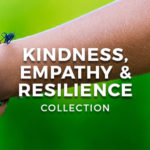Emotional Intelligence
Amani Project is a family of local organizations that teach young people 8-14 years old music-making and emotional intelligence through a do-it-yourself curriculum.
Kindness in the Classroom is a multi-part video series designed to give educators insight into the positive impacts of teaching mindfulness in a classroom setting. The series focuses on implementing the Kindness Curriculum; a free 24-lesson mindfulness guide designed for pre-k and kindergarten classrooms, researched and developed by the Center for Healthy Minds at UW-Madison.
Six Seconds researches and shares scientific, global, transformational tools & methods to support the goal of a billion people practicing the skills of emotional intelligence.
“Teaching Emotional Intelligence to Teens and Students” is an article published by PositivePsychology.com about effective techniques to teach teenage students emotional intelligence.
Think Equal is a nonprofit that offers social and emotional learning programming for children ages 3 to 6.
This collection of videos and lesson plans is about kindness, empathy, and the importance of practicing mindfulness. These resources will help educators foster resilience in students grades 6-12, and include strategies to help teenagers cope with the stresses of everyday life, as well as specific challenges. The collection offers proactive approaches to help students forge new friendships and explore the concepts of self-care, care for others, and the responsibilities associated with being a supportive community member.
The Yale Center for Emotional Intelligence uses the power of emotions to create a more healthy, effective and compassionate society.
This guide offers advice on how to talk to children about tragic events, such as shootings and terrorist attacks, that they are likely to hear about at school and/or on the news.
Violent attacks that target people because of their identities happen around the world with disturbing frequency. What can educators do to help students reflect on and understand these attacks?
These guidelines are designed to help school administrators, teachers, and crisis team members respond to the needs of students and staff after a loss has impacted the school environment, such as after the death of a student or staff member or when deaths occur that affect many people in the community.
Basic tips for how to talk with a child of any age about gun violence.
Children with childhood traumatic grief often try to avoid talking about the deceased person or their feelings about the death, but talking about it may be important for resolving trauma symptoms that are interfering with the child’s ability to grieve. If symptoms similar to those listed on this sheet persist, professional help may be needed. The professional should have experience in working with children and adolescents and specifically with issues of grief and trauma.










